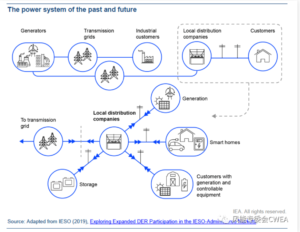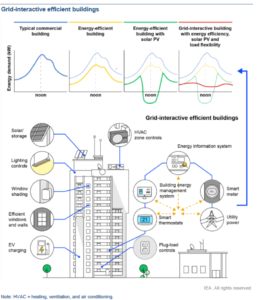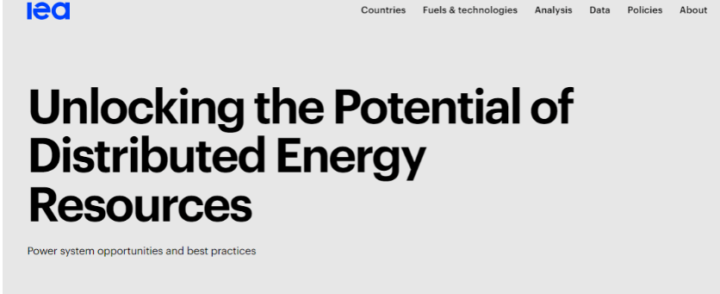Unlocking the Potential of Distributed Energy Resources
Distributed energy resources (DERs) are small-scale energy resources usually situated near sites of electricity use, such as rooftop solar panels and battery storage. Their rapid expansion is transforming not only the way electricity is generated, but also how it is traded, delivered and consumed.
Accordingly, DERs can create new power system opportunities, but at the same time, can pose new challenges when a grid has not been properly prepared. Many jurisdictions are just beginning to understand how DERs fit into the wider energy landscape – what they are and what impacts they have on the grid, and how they can be used to improve system reliability and reduce overall energy costs. Meanwhile, other regions have built up experience with DERs, demonstrating that they can provide valuable services to the grid when incentivised with appropriate technologies, policies and regulations.

Nonetheless, not all countries use the same electricity market model or are at the same stage of DER penetration, and the fit-for-purpose solutions will vary from place to place. This report reviews lessons from forerunners and distils best practices (with examples and case studies) to help policymakers, regulators and system operators across the globe understand what experience is most relevant to their own situation. Readers will be able to draw on a wide range of practical insights for electricity market design and regulation to help unlock the multiple grid benefits of DER technologies.
Digital technologies such as network monitoring devices and smart meters can improve visibility for distribution grids. Advanced inverters can enable consumers to monitor, programme and remotely control the power output of their distributed PV systems. Meanwhile, digital management systems can support aggregation of individual DERs and provide diverse services to multiple stakeholders all along the electricity supply chain. In these ways, digitalisation can help regulators and system operators adjust electricity prices and regulations to encourage consumers and aggregators to install and operate DERs in line with grid needs.

Distributed energy resources are creating new power system opportunities, and also challenges
Five technologies and solutions, each with its advantages and limitations, are particularly promising:
- Battery storage systems can provide a range of services to the grid, such as storing energy during excess renewable generation periods and discharging it during peak demand. Their main limitation is their relatively high upfront cost.
- EVs are versatile when used as mobile battery systems, though their value to the grid varies depending on charging technology and control strategy.
- Electric water storage and space heaters can provide system flexibility when equipped with low-cost control devices, though electrifying existing homes already equipped with gas services could require significant investment.
- Grid-interactive efficient buildings can optimise energy ‘prosumption’ (combined electricity production and consumption) while accommodating grid needs and offering a wide spectrum of grid interactivity. Employing the appropriate incentives can offer more benefits to the entire power system, as consumers would otherwise opt for combinations of technologies that best serve their own interests.
- Virtual power plants (VPPs), i.e. networks of decentralised power generating units, storage systems, and flexible demand, can optimise the aggregation of distributed resources across large areas by using advanced data analytics such as machine learning. Policy and regulatory issues, including value-stacking rules, are the main barriers to wider VPP deployment.

Insight 1: Better visibility of distribution system and consumer dynamics
One of the main obstacles in integrating DERs into power systems is a lack of sufficient visibility into low-voltage grids and behind-the-meter resources.
To better understand them, policymakers, regulators and system operators can:
- Identify data gaps and plan to remedy them to obtain fit-for-purpose levels of visibility over the sector.
- Make the most of available data sources and create robust data management systems
- Develop a single flexibility resource registry common to all market participants and explore more-granular data collection options.
- Improve short-term demand forecasting, dynamic network modelling and long-term capacity planning.
Source: IEA



